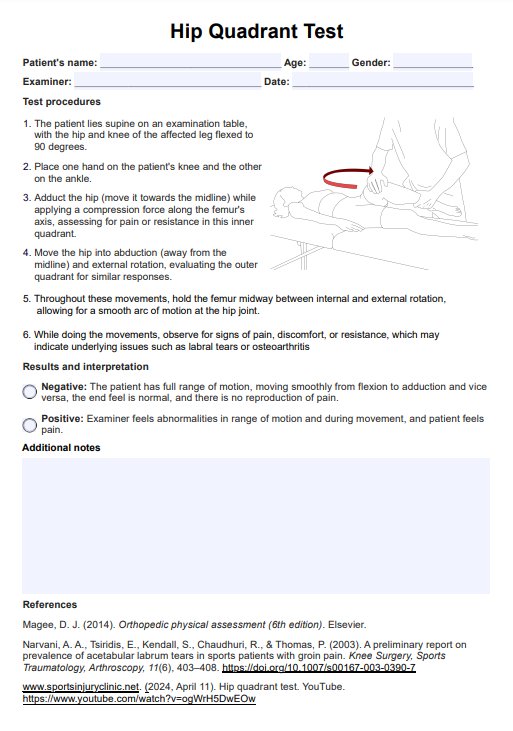The Hip Quadrant Test is a physical examination used to assess range of motion and detect intra-articular hip pathology. By moving the hip through specific motions, healthcare providers can evaluate whether the hip joint is contributing to groin pain or hip-related pathologies.

Hip Quadrant Test
Assess your patients' hip joint mobility and identify potential pathologies quickly and consistently today with our Hip Quadrant Test template.
Hip Quadrant Test Template
Commonly asked questions
A positive Hip Quadrant Test occurs when the patient experiences pain, clicking, or restricted movement during the test. This result suggests potential hip joint pathology, such as hip impingement, labral tears, or arthritis.
The four quadrants of the hip are defined by the movements evaluated during the test: flexion with adduction (inner quadrant), flexion with abduction (outer quadrant), and internal and external rotation within these movements. These quadrants assess the integrity and function of the femoral acetabular joint.
EHR and practice management software
Get started for free
*No credit card required
Free
$0/usd
Unlimited clients
Telehealth
1GB of storage
Client portal text
Automated billing and online payments











